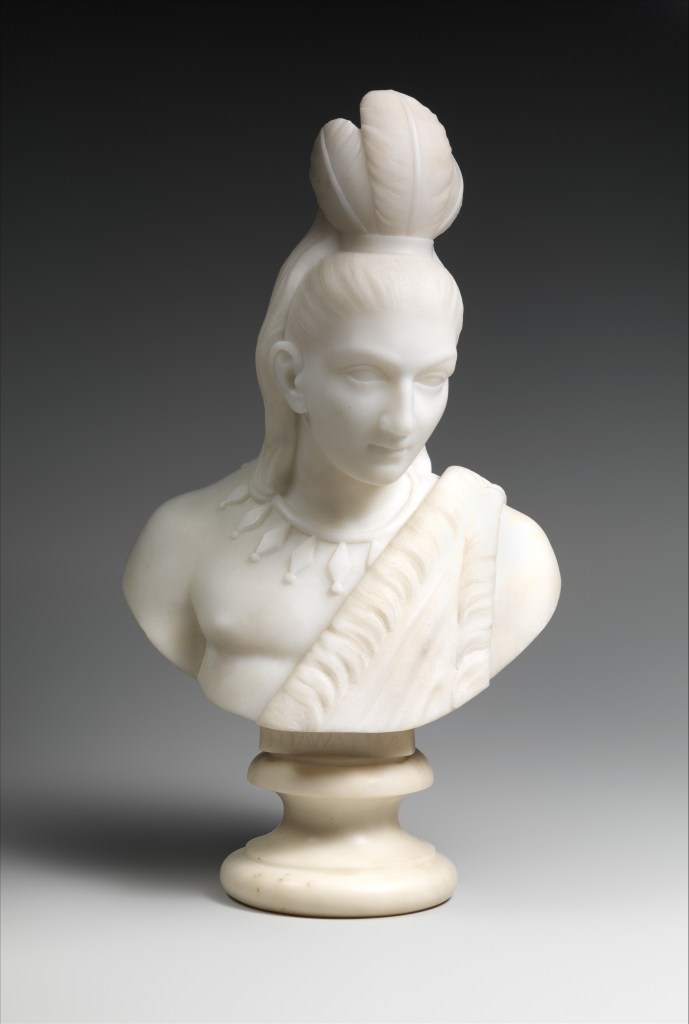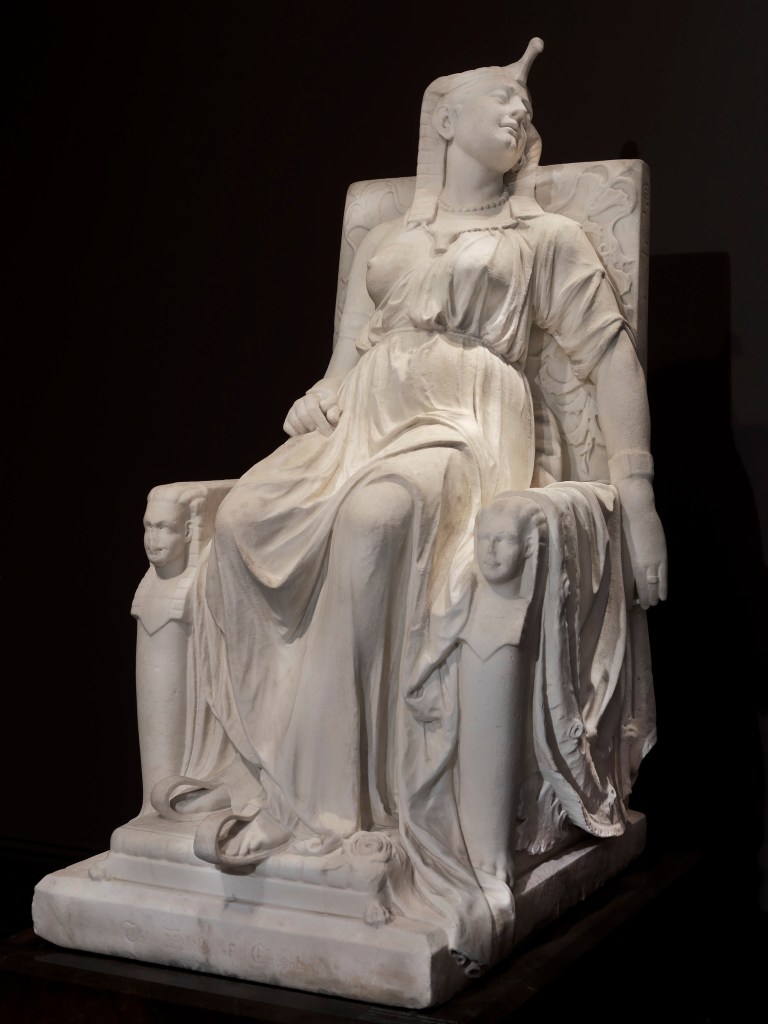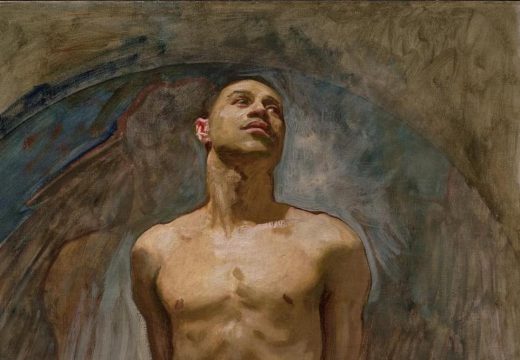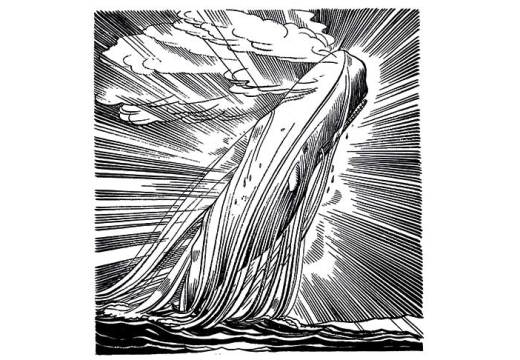Despite the inclusion of an ‘all persons fictitious’ disclaimer in the book’s front matter, the protagonist of BOOM! Studios’ latest graphic novel is very much real. Seen: True Stories of Marginalized Trailblazers – Edmonia Lewis is the first graphic novel in a series on marginalised historical figures. It recounts the life of Edmonia Lewis, the first black and Native American sculptor to achieve international acclaim. Writer-illustrators have increasingly seized upon the graphic novel genre as a means of relaying biographical stories – Art Spiegelman’s serialised Maus (1986–1991) about his father’s experience as a Holocaust survivor paved the way for biographies of Anne Frank, Nelson Mandela, Samia Yusuf Omar, and others –and the form’s simultaneity of text and image makes it particularly apposite for the biography of an artist.
The story begins with Lewis’s birth to a part-Chippewa mother and an African American father, a freed slave, in upstate New York in 1844, two decades prior to Emancipation. Orphaned at an early age, Lewis was raised by her Ojibwe relatives. With funds from her brother and donations from abolitionists, she attended Oberlin College, the first college to admit African American students and among the first to admit women. When two of Lewis’s white classmates became sick from mulled wine that she served, she was accused of poisoning them. After being brutally beaten – which the graphic novel relays with text and an image of an empty field at night – and enduring a lengthy trial, which she won, Lewis was accused of stealing art supplies. She left school shortly thereafter, heading to the abolitionist hotspot of Boston. Maps, suitcases, and visas serve as shorthand for travel, classic tropes in the genre.

From Seen: True Stories of Marginalized Trailblazers – Edmonia Lewis (BOOM! Studios)
There, Lewis opened her own studio. Her medallion portraits and busts of famous abolitionists were popular among abolitionist art collectors, who wanted both to support the careers of African American artists and own work on anti-slavery themes. Lewis was like many female professional artists from the mercantile class in that she had to be active in selling work, courting patronage, and obtaining commissions to stay solvent. However, her peers were typically working in the more commercially viable and ‘gender-appropriate’ medium of painting, a relevant fact that falls outside of this biography’s purview. The graphic novel refers to several instances of Lewis’s market savvy, which was essential to her professional success. After selling a bust of Union army colonel Robert Gould Shaw to his family, she produced 100 plaster replicas of the popular officer to sell to the public at a more affordable price point, funding her move to Rome in 1866.

Hiawatha (1868), Edmonia Lewis. Metropolitan Museum of Art, New York
In Rome, Lewis became a member of what author Henry James disparagingly referred to as the ‘white marmorean flock’, a group of female American expats who achieved professional success as sculptors at a time when women were discouraged from pursuing the highly physical, ‘high art’ discipline. She was the only woman of colour in the group and the most financially disadvantaged. The novel nods to the increase in the scale of Lewis’s work at this juncture, interspersing the busts that filled earlier backdrops with neoclassical monuments. These sculptures had personal relevance while appealing to her American abolitionist patrons: a series of sculptures of the Ojibwe and Dakota characters in Henry Wadsworth Longfellow’s poem The Song of Hiawatha (1855), and anti-slavery sculptures such as Morning of Liberty/Forever Free (1867), which remains the oldest surviving Emancipation sculpture by an African American artist. Lewis also made sculptures on ancient Egyptian themes, a popular genre through which she could address issues of race such as chattel slavery (in a sculpture of the biblical figure Hagar) or the African diaspora (in a monument of Cleopatra) in the form of allegory.
Pointing to the lives that artworks have separately from their creators, the graphic novel treats the Death of Cleopatra (1875), Lewis’s 3,000-pound marble magnum opus, as a character with a distinct subplot in which Lewis is virtually absent. When it didn’t sell at the 1876 Centennial Exposition in Philadelphia, the monument went ‘missing’ on the provenance journey of a lifetime. After serving as bar decor and as a tombstone for a dead racehorse named Cleopatra, it was eventually acquired by a dentist and member of the Historical Society of Forest Park who stored it at a local shopping centre. Through the diligent efforts of art historian Marilyn Richardson, bibliographer Dorothy Porter Wesley, and curator George Gurney – including phone calls spanning multiple panels of the graphic novel – the sculpture made its way into the permanent collection of the Smithsonian in Washington, D.C. in 1994.

The Death of Cleopatra (1876), Edmonia Lewis. Smithsonian American Art Museum, Washington, D.C.
When neoclassicism went out of style in the late 1880s and the centre of contemporary art migrated from Rome to Paris, Lewis fell into obscurity, despite holding studio visits with high-profile figures such as Frederick Douglass just a few years prior. Many details of Lewis’s life – and her later life in particular – are unclear. She lacked a biographer during her lifetime and provided conflicting information about her upbringing, and her sensationalised press coverage was often riddled with inaccuracies. For a long time, even the site of Lewis’s burial place was unknown. But major inroads have been made in recent years, spearheaded by Richardson, who can take much of the credit for the rediscovery of Death of Cleopatra and recently found Lewis’s grave in London – leading a local historian in Lewis’s birthplace to secure the artist a headstone in the west London cemetery where she is buried. Art history, the fastidiously researched Edmonia Lewis reminds us, is an ever-evolving subject, and conscientious research can push us forward by looking backward. Lewis’s work is now held in major collections such as the Metropolitan Museum of Art in New York, the Baltimore Museum of Art, and the Smithsonian, which is giving the artist her due with a virtual exhibition of her work, online now.
Seen: True Stories of Marginalized Trailblazers – Edmonia Lewis by Jasmine Walls, illustrated by Bex Glendining and coloured by Kieran Quigley, is published by BOOM! Studios in September.
Unlimited access from just $16 every 3 months
Subscribe to get unlimited and exclusive access to the top art stories, interviews and exhibition reviews.














![Masterpiece [Re]discovery 2022. Photo: Ben Fisher Photography, courtesy of Masterpiece London](http://www.apollo-magazine.com/wp-content/uploads/2022/07/MPL2022_4263.jpg)
Has arts punditry become a perk for politicos?